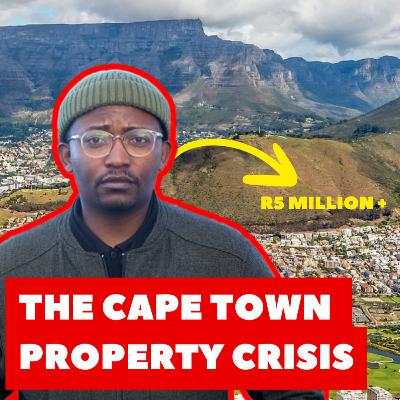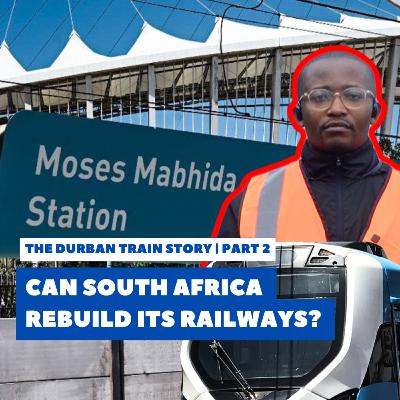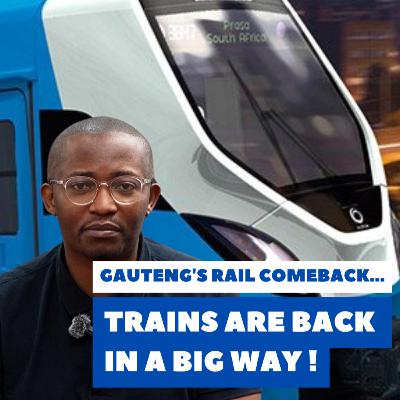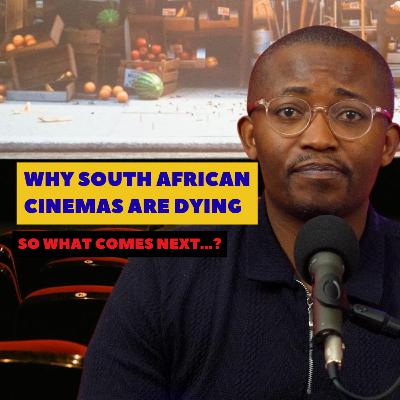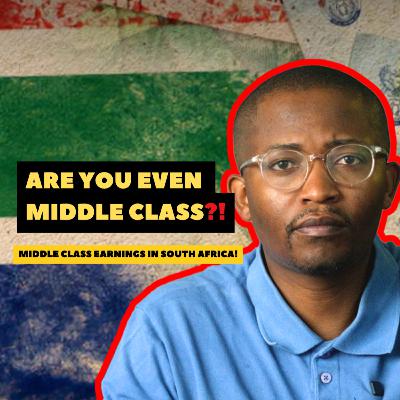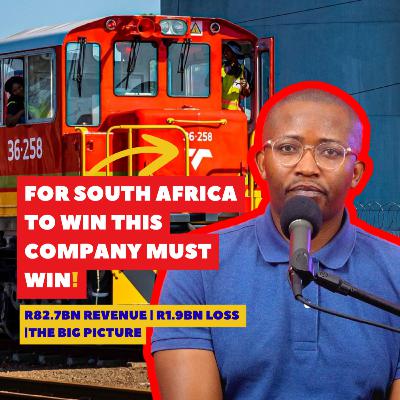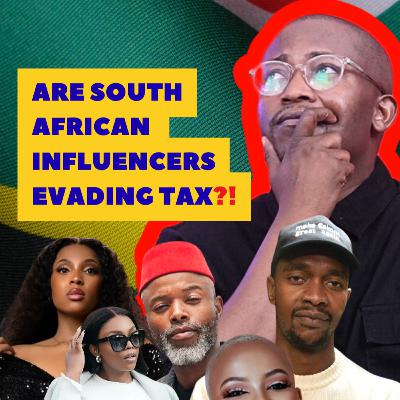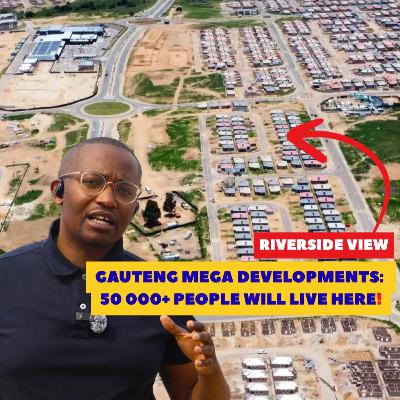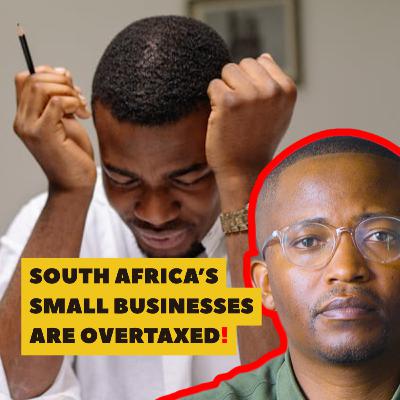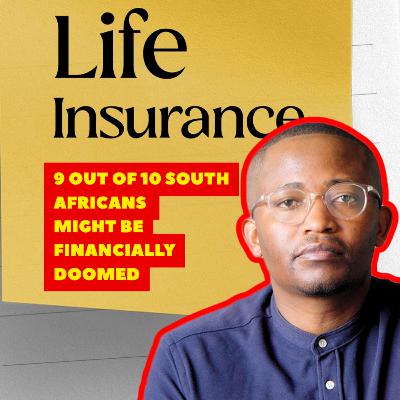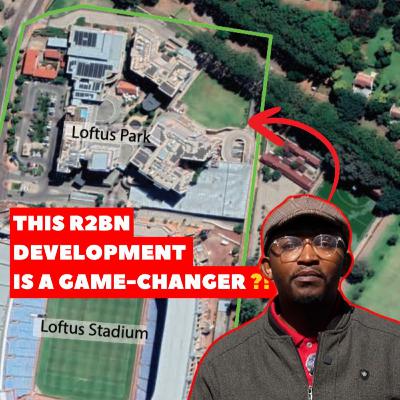Discover Mooshtaffa Platforms
Mooshtaffa Platforms

Mooshtaffa Platforms
Author: Mooshtaffa
Subscribed: 4Played: 0Subscribe
Share
© Mooshtaffa
Description
I am Zimasa Vabaza, more commonly known as @mooshtaffa on social media. I created this platform because of the love I have for simplifying socio-economic knowledge around South Africa, SADC, Africa, & the globe. Here we cover small & big stories that matter—stories that you should know but from a different, less explored perspective.
We also host podcast-style conversations with interesting people. We hope you will watch, engage, and enjoy.
We also host podcast-style conversations with interesting people. We hope you will watch, engage, and enjoy.
62 Episodes
Reverse
Is Cape Town already Africa's Silicon Valley? In this deep dive, we break down the data behind Cape Town's explosive tech growth and why international companies from Amazon to Canadian startups are choosing the Mother City over established global hubs.We explore:The infrastructure that increased bandwidth by 1,000xWhy the Cape Town-Stellenbosch corridor employs more tech workers than Nairobi and Lagos combinedHow 450 tech firms and 40,000+ employees are reshaping Africa's tech landscapeThe talent pipeline producing 12,000+ STEM graduates annuallyInvestment flows: $88 million into Cape Town startups in 2020 aloneSuccess stories: From Yoco to Takealot to Future ForexInternational recognition from Financial Times, World Bank, and Startup GenomeWith 60% of South Africa's startups, 38% of the country's developers, and over 30 venture capital firms including Naspers, Cape Town isn't trying to become a tech hub—it already is one.The numbers don't lie: African startup ecosystems are worth $6.6 billion, and Cape Town is leading the charge. This is the story of how one city moved past potential and into performance.
South Africa's Township Property RevolutionThe R585,000 Investment Opportunity Everyone's MissingWhile everyone's focused on Sandton and Camps Bay, a R20+ billion property market is booming right under our noses. Women are leading 55% of purchases, the average buyer is 38 with a R43,800 income, and properties have doubled in value over a decade.We dive deep into exclusive data from Lightstone and BetterBond revealing:How Soweto became South Africa's wealthiest township (R585,000 avg property value)Why 86% of township bonds happen in just TWO areasThe female-dominated investment trend changing everythingProperty appreciation rates that rival equity marketsMigration patterns reshaping South Africa's urban futureKey Findings:2.5 million people live in just three townships (Soweto, Umlazi, Khayelitsha)52% of buyers aged 30-39 (prime earning years)Cape Town properties cost 7X more than KhayelitshaAthlone values doubled from R750k to R1.6m in 10 yearsOnly 14% of bonds exceed R1 millionThis isn't about affordable housing—it's about smart wealth building.
Why Cape Town is Pricing Out an Entire Generation | The Housing Crisis ExplainedCape Town's rental prices have jumped 24% since 2018, reaching R10,875 per month – the highest in South Africa. Property values have surged 160% since 2010. But while politicians blame digital nomads and propose rent control, the evidence tells a completely different story.In this video, we break down the real reasons behind Cape Town's housing crisis and why an entire generation of Born Frees – young South Africans who were supposed to inherit a country without spatial restrictions – are being systematically priced out of the city they work in.We explore:The shocking rental and property price increases across Cape TownWhy rent control would make things worse (with evidence from Argentina and Germany)The real solution: Build, Baby, BuildHow regulatory red tape is strangling housing supplyWhy the Born Free generation is struggling to access homeownershipThe gap between government promises and actual housing deliveryThis isn't about blaming individuals – it's about understanding the systems that created this crisis and what the evidence says will actually fix it.📊 Key Stats Referenced:Western Cape average rent: R10,875/month (2024)Cape Town property prices up 160% since 201075% of Cape Town households earn less than R18,000/monthForeign buyers account for 40% of purchases over R10 million
Durban's commuter rail network is moving again. After years of collapse, vandalism, and devastating floods, trains are reconnecting KwaZulu-Natal's communities with economic opportunity—one journey at a time.This is Part 2 of our four-part series documenting South Africa's railway transformation. We're riding the rails through Gauteng, KwaZulu-Natal, the Eastern Cape, and the Western Cape to understand what collapsed, what's been rebuilt, and what it means for millions who depend on affordable transport.THE KWAZULU-NATAL STORYKwaZulu-Natal's rail recovery faces challenges unlike any other region. Coastal infrastructure exposed to harsh marine environments. Flood damage from the April 2022 disaster that destroyed bridges and washed away tracks. A network connecting sprawling townships like Umlazi—one of South Africa's largest—to Durban's port economy.The Umlazi-Durban corridor is the backbone of KZN's rail network, serving hundreds of thousands of commuters who were abandoned when trains stopped running. For workers earning R5,000-R8,000 monthly, the difference between a R24 train fare and R50+ taxi fare isn't convenience—it's economic survival.WHAT YOU'LL SEE IN THIS EPISODEThe critical Umlazi corridor restoration and what it means for township communitiesHow PRASA rebuilt flood-damaged infrastructure while maintaining operationsThe unique challenges of maintaining coastal rail infrastructureReal commuters explaining how restored trains changed their household economicsModern blue trains (X'Trapolis Mega) manufactured locally in South AfricaPerformance data showing measurable recovery across the KZN networkSpecial event services connecting communities to King's Park Stadium and Moses MabhidaWhat remains to be done and the road ahead for full restoration
In 2020, Johannesburg's train network—South Africa's largest—carried just 2 million passengers. Vandalism had stripped over 1,000 kilometers of copper cable. Stations stood abandoned. Security was absent. The network that once moved 200 million trips annually had collapsed by 99%.By 2025, that same network moved 20 million passengers across 26 restored corridors, achieving 91% on-time performance. This is the story of Gauteng's rail recovery—the largest, most complex commuter rail network in Southern Africa, serving Johannesburg, Pretoria, and Ekurhuleni.This is Part 1 of a four-part series profiling PRASA's rail networks across South Africa's major metros: Gauteng, KwaZulu-Natal, Eastern Cape, and Western Cape. Each region faces different challenges. Each recovery looks different. But together, they tell the story of whether South Africa can rebuild critical public infrastructure.🚂 KEY STATISTICS:• 20 million passenger trips in 2024/25 (up from 2 million in 2020/21)• 26 of 34 corridors now operational• 91% on-time performance• 77% of trains arrive within 5 minutes of schedule• R24 average train fare vs R50+ taxi fare• 471 kilometers of operational track• 115 operational stations📊 THE NUMBERS THAT MATTER:This video breaks down exactly what recovery looks like in data terms—passenger growth, corridor restoration, on-time performance, safety improvements, and the affordability gap that makes rail essential for working South Africans.🎯 WHAT YOU'LL LEARN:• Why Gauteng's rail network collapsed between 2016-2020• How Covid-19 lockdowns enabled systematic infrastructure theft• The corridor-by-corridor recovery strategy from 2021-2025• Why some lines recovered faster than others• Real commuter stories: the R26-per-day difference that matters• What 91% on-time performance actually means operationally• The security strategy that reduced incidents from 3,387 to under 900• Why recovery isn't the same as restoration to historical levels⚠️ THE HONEST ASSESSMENT:20 million trips sounds impressive until you remember this network once moved 200 million trips annually. Recovery is real, but Gauteng is still operating at roughly 10% of historical capacity. This video doesn't sugarcoat—it presents both the genuine progress and the immense distance still to travel.🗺️ COMING NEXT IN THE SERIES:Part 2: KwaZulu-Natal - Floods, Bridges, and the Durban CorridorPart 3: Eastern Cape - The Province Where Trains Simply Disappeared Part 4: Western Cape - Where Recovery Faces Its Toughest Test
Are South Africans REALLY Spending R1 Trillion on Gambling? The Truth Behind the HeadlinesHeadlines scream that South Africans are gambling away R1 trillion. Parliamentarians are panicking. Economists are confused. But here's the reality: that number is massively misleading, and the actual story is far more complex—and more troubling—than anyone's telling you.In this video essay, we unpack South Africa's explosive gambling boom that's reshaping our economy and threatening our social fabric. We reveal the truth behind the sensational statistics and explore why sports betting has become the fastest-growing industry in the country.What We Cover:✅ The R1 trillion myth: Why this number is "funny money"✅ Real gambling revenue: R59.3 billion (bigger than stokvels!)✅ Sports betting's 51% growth rate—no other SA industry comes close✅ How the house always wins: The brutal mathematics explained✅ Unemployment + desperation = gambling boom✅ Problem gambling up 500% since 2017✅ Why 63% gamble with money they can't spare✅ Provincial competition: How Mpumalanga is eating Gauteng's lunch✅ The tax debate: Should winnings be taxed?✅ Can this growth be sustained?Key Statistics:Gross gambling revenue: R59.3 billion (FY2023/24)Sports betting growth: 51.2% year-on-yearBetting generates 60.5% of industry revenue (R35.9 billion)Problem gambling prevalence: 31% (up from 6% in 2017)Unemployment rate: 32.1% (youth: 45.5%)56% of punters gamble because they need moneyHouse edge: 3-5% (you lose half your money after 23 bets)Industry employs 35,000+ people directlyFrom Betway's R900 million PSL sponsorship to the mathematics of how online platforms extract R36.9 billion annually, we break down every angle of this controversial industry. We examine why Famous Brands is complaining that gambling is threatening restaurants, how traditional casinos are scrambling to compete, and whether we're witnessing economic opportunity or social disaster.💬 Join the conversation: Is South Africa's gambling boom sustainable? Should we tax individual winnings? What's your view on the connection between economic hardship and gambling? Drop your thoughts in the comments!
South Africa's cinema industry is in freefall. Over the past decade, we've lost a third of our movie theatres, with iconic venues like Cavendish Square closing their doors forever. But what's really behind this dramatic decline?In this video, we unpack the perfect storm destroying South African cinemas:How Ster-Kinekor and Nu Metro lost 25 cinema locations in 10 yearsTicket prices that have TRIPLED since 2014The Netflix effect and streaming's devastating impactWhy a family night out now costs over R1,000Economic pressures, load shedding, and pandemic falloutThe fight back: Can innovation save our cinemas?From R50 throwback screenings to luxury VIP experiences, we explore how cinema chains are desperately trying to stay relevant in the age of streaming. Is this the end of the big screen experience, or just the beginning of a new chapter?📊 Key Stats:33% reduction in cinema locations (2015-2025)Ster-Kinekor closed 21 theatres (38% decline)Ticket prices increased 100-209% in a decadeGlobal cinema attendance dropped 8.8% in 2024💬 What's your take? When was the last time you went to the cinema?
Are You REALLY Middle Class in South Africa? Here's What You Actually Need to EarnThink you know what it takes to be middle class in South Africa? Think again. With estimates ranging from R4,300 to R30,000 per month, the answer is far more complicated than you'd expect.In this video, we break down the confusing world of South Africa's middle class, exploring why there's no official definition and what different income levels actually mean for your lifestyle.What We Cover:✅ Why experts can't agree on middle-class income (R5K to R30K range!)✅ Lower Middle Class (R5,000-R10,000): The survival struggle✅ Middle Middle Class (R10,000-R22,000): Where comfort begins✅ Upper Middle Class (R22,000-R30,000+): Living well by SA standards✅ Real costs: Housing, groceries, transport at each level✅ How unemployment rates skew the numbers✅ Hidden factors beyond just salaryKey Statistics:Average formal sector wage: R27,450-R28,231/monthMedian wage: R5,400/month (shows massive inequality)Unemployment rate: 32-33%Only 12% qualify as "professional middle class"Whether you're earning R8,000 or R28,000, understanding where you fit helps you make better financial decisions. Drop a comment and let us know what you consider "middle class" in South Africa!💬 Join the conversation: What's your definition of middle class?
Transnet's financial results for the year ended March 2025 are in, and they reveal a story of a dramatic turnaround. After years of crisis, the state-owned logistics giant is showing real signs of recovery. But how did they do it? And is it sustainable?In this video, we break down the key numbers, the ongoing challenges, and what this recovery means for every South African.📈 Key Highlights from Transnet's 2025 Results:Revenue Up 7.8% to R82.7 BillionNet Loss Slashed by 74% to R1.9 BillionOperational Profit (EBITDA) Jumps 39.4% to R30.6 BillionCapital Investment Increases 44% to Fix InfrastructureRail Volumes Finally Increase after Years of Decline🔥 We also dive into the major challenges:The R5 Billion/year cost of vandalism to South Africa.Transnet's R4 Billion revenue loss from theft and maintenance backlogs.The massive R144.7 Billion debt burden.The new strategy of private sector partnerships (PSP).Transnet's recovery is South Africa's recovery. When our ports and rails work, our economy thrives. Get the full story here.Disclaimer: This video is for informational and educational purposes only and is not financial advice. The analysis is based on publicly available information and official reports.
The Truth About BEE Ownership in South Africa (It's Not What You Think)For years, we've heard that BEE only benefited "100 politically connected elites." But new data reveals a completely different story that challenges everything we thought we knew about Black Economic Empowerment in South Africa.In this video, I break down groundbreaking research from Tusker that analyzed 54,000 South African businesses to uncover the real impact of BEE ownership policies. The findings? At least 873,000 Black shareholders have benefited directly - that's 8,730 times more than the popular narrative suggests!Key Takeaways:✅ Analysis of 54,000 businesses (45% of SA's VAT vendors)✅ Clear evidence that BEE policy actually drives business behavior✅ How ownership patterns differ between small, medium & large companies✅ Why EMEs, QSEs, and Generic companies make different ownership decisions✅ The role of ESOPs (Employee Share Ownership Plans) in spreading ownership✅ Major companies with hundreds of thousands of Black shareholdersTimestamps:This doesn't mean BEE is perfect or that wealth inequality isn't still a massive problem. But it does mean we've been having the wrong conversation about transformation in South Africa.Source: "The elephant in the room: the BEE ownership landscape in 2025" by Gareth Ochse & Des Mahony (Tusker.co.za)📊 Want to dive deeper? Check out the full research report at tusker.co.za💬 What's your take? Have you benefited from BEE ownership schemes? Let me know in the comments
South Africa's influencer economy just got a wake-up call. SARS is targeting over R500 billion in unpaid taxes, and content creators are now in the crosshairs. From free dinners to sponsored trips, everything counts as taxable income.In this video, we break down:✓ Why SARS created a new "Social Influencer" tax segment✓ How much SA influencers actually earn (Ryan HD: R988k/month!)✓ What counts as taxable income (spoiler: everything)✓ How SARS tracks non-cash payments✓ Steps to become compliant✓ What creators like Lasizwe are sayingKEY NUMBERS:- R500 billion in unpaid taxes targeted- Top YouTuber: R11.85 million annually- Celebrity influencer rates: R34,333 per reel- Macro influencers: R18,096 per reel- VAT threshold: R1 million annual earningsWhether you're a nano influencer or creating content full-time, this affects you. Watch to understand your tax obligations before SARS comes knocking.
Step inside Riverside View, one of South Africa's most ambitious housing developments that's literally rewriting the map of Johannesburg. Located in Fourways, this R500+ million mega project isn't just building houses – it's building hope for over 40,000 residents.In this documentary, I explore how Riverside View is tackling apartheid's spatial legacy by placing affordable housing right next to upmarket developments like Steyn City. With 10,105 mixed-income units comprising RDP housing, FLISP homes, and social rental apartments, this development proves that integration is possible.What You'll Discover:How 12,409 jobs were created through local employment initiativesWhy properties cost R550K-R1.8M and what that means for affordabilityThe government's First Home Financing programme bridging the gap marketReal stories from Diepsloot and Ivory Park residents finding new opportunitiesFour schools, shopping centers, and complete infrastructure changing livesKey Numbers:4,140 RDP units2,949 FLISP units3,020 social housing rentalsR1,200-R2,500 monthly rental range30,000+ applications for just 184 unitsThis isn't just about housing statistics – it's about spatial justice, economic integration, and what happens when public-private partnerships work. From Raubex's pioneering four-storey RDP buildings to JOSHCO's innovative rental model, Riverside View represents a new model for post-apartheid urban development.
The Shocking Truth About South African Business Taxes: Why Entrepreneurs Are Being CrushedAre South African small businesses being taxed to death? In this eye-opening analysis, we break down exactly how much the government takes from a typical R11.5 million business - and the results will shock you.🔥 KEY HIGHLIGHTS:Government takes R4.6 million while business owner keeps just R576,000For every R100 earned, government gets R40, owner gets R5Multiple layers of taxation crushing business growthWhy the "small business tax" system is inadequate for growing companies📊 What We Cover:Complete breakdown of all taxes and leviesVAT, import duties, corporate tax, and moreThe devastating "growth penalty" for successful businessesHow estate duty punishes success even after deathWhy SA businesses can't compete globallyReal solutions for tax reformThis isn't anti-tax rhetoric - it's about finding the right balance between fair contribution and punitive extraction that's killing entrepreneurship in South Africa.💡 Perfect for:Business owners and entrepreneursAnyone considering starting a business in SAPolicy makers and tax reform advocatesStudents of economics and business⚠️ The Bottom Line: South Africa's tax system is designed for failure, punishing the very people who create jobs and drive economic growth.#SouthAfricaBusiness #TaxReform #Entrepreneurship #SmallBusiness #SouthAfricanEconomyDisclaimer: This content is for educational purposes. Consult qualified tax professionals for specific advice.
South Africa's life insurance industry just paid out R298 billion in six months - but here's the shocking truth: 9 out of 10 South Africans have NO life insurance coverage at all.In this eye-opening investigation, we dive deep into the state of South Africa's life insurance sector. While companies are sitting on R4.3 trillion in assets and paying out over 95% of legitimate claims, millions of families are walking a financial tightrope without any safety net.What You'll Discover:Why R298 billion in payouts still isn't enoughThe massive insurance gap leaving families vulnerableHow economic pressure is forcing people to cancel policiesRising insurance fraud and murder-for-payout schemesWhy young South Africans are dangerously underinsuredThe real cost of waiting to get life insuranceKey Statistics That Will Shock You:Only 45% of South African households have adequate insurance coverage4.3 million policies were cancelled in just 6 months due to financial pressureAverage person under 30 needs R2.7 million in disability cover but only has R1 million38 people were murdered for their insurance payouts in 2024Cancer rates among young people (25-29) have increased 22% since 1990The Hard Truth:While life insurers are financially stronger than ever, the average South African family remains dangerously exposed. With unemployment at 33.5% and household budgets stretched to breaking point, many people are forced to choose between paying for insurance and putting food on the table.But here's what the industry doesn't want you to know: the younger and healthier you are when you get coverage, the cheaper it will be for LIFE. Waiting could cost you thousands or make you uninsurable altogether.We also expose the dark side - sophisticated fraud schemes costing the industry over R130 million annually, and how these costs get passed on to honest policyholders through higher premiums.Bottom Line: South Africa's life insurance industry is a tale of two realities - incredible financial strength serving a population that desperately needs more protection. This video breaks down everything you need to know to make informed decisions about your family's financial security.
Last week's journey to Scorpion Kings Live wasn't just about getting to a concert – it was about understanding how events generate massive economic impact and why transport integration matters for every South African.I'm taking you from Midrand Gautrain Station to Loftus Versfeld, documenting the real economic story behind major entertainment events. When Chris Brown performed at FNB Stadium, that single concert generated R900 million for Gauteng's economy and created over 6,000 temporary jobs. Tonight, we're exploring how this economic multiplier effect works and why the transport systems that make these events possible deserve serious attention.The Gautrain isn't just moving people – it's moving R1.7 billion worth of annual economic activity. During construction alone, this system created 121,000 jobs and added R20 billion to the provincial economy. With 24-hour security, 600+ CCTV cameras, and seamless integration with 125 feeder buses, it demonstrates what world-class public transport can achieve.But here's the critical question: why do we only see this level of transport coordination for special events? The PRASA integration working perfectly tonight for R20 return fares shows what's possible when systems work together. Every day, millions of South Africans need reliable, safe, affordable transport to access economic opportunities. The same infrastructure enabling tonight's entertainment should enable daily economic participation for everyone.
Join me on a personal journey through one of South Africa's most remarkable urban transformations. Eighteen years ago, I first discovered Florida Road during a weekend getaway - a vibrant 2-kilometer stretch that reminded me of Johannesburg's Seventh Street in Melville, but with its own unique edge. After witnessing its decline and the challenges that followed, I'm back to document an incredible comeback story.This isn't just another urban development video - it's the story of how a community, private investors, and local government came together to create something extraordinary. Florida Road has become a R1.2 billion success story that's now being replicated across KwaZulu-Natal.What You'll Discover:How the Florida Road Urban Improvement Precinct (UIP) transformed a struggling areaUrban Lime's catalytic R1.2 billion investment strategy across 25 buildingsThe economics behind 60+ restaurants generating R21-48 million monthly2six2's R300-500 million development impact on property valuesDurban's massive R62 billion inner-city renewal vision over 15 yearsReal employment numbers: hundreds of direct jobs, thousands indirectThe shift from nightlife hotspot to family-friendly community hubFrom Victorian architecture preservation to cutting-edge mixed-use developments, Florida Road proves that urban regeneration can honor the past while building for the future. With over 200,000 square meters of retail space, 100+ office units, and annual restaurant revenue of R252-576 million, this precinct has become essential to Durban's economy.But beyond the numbers, this is about community. From Halloween events drawing 600+ families to trick-or-treat, to 1,000+ people participating in community gatherings, Florida Road has redefined what urban success looks like.As Durban prepares for its R62 billion urban renewal project, Florida Road stands as proof of what's possible when vision meets collaboration. For a city with 4.2 million residents and almost half a trillion rand GDP, this precinct offers a template for sustainable urban development.Whether you're interested in urban planning, property investment, or South African development, this deep dive into Florida Road's transformation offers insights into one of the continent's most successful regeneration projects.
Is South Africa's capital city experiencing a genuine turnaround or just masterful political spin?Tshwane finds itself at the center of a heated political battle, with ActionSA claiming miraculous progress while the DA cries foul over opportunistic power grabs. But what's really happening on the ground?In this deep dive, we explore the competing narratives shaping South Africa's administrative capital:THE CLAIMS:21,000 streetlights repaired in 100 days99% reduction in pothole backlogCity reserves jumping from R50 million to R368 millionClean water finally restored to Hammanskraal after 20 yearsTHE REALITY CHECK:R4.3 billion inherited deficitR7 billion infrastructure backlogOnly 76% revenue collection rate60% of treated water lost through leaks and theftTHE POLITICAL DRAMA:From Cilliers Brink's removal to coalition instability, we unpack how political maneuvering affects actual service delivery. Is this progress sustainable, or will it collapse when the coalition inevitably changes?We examine perspectives from ActionSA's victory celebration, the DA's bitter opposition, skeptical analysts, and most importantly - ordinary residents living through these changes daily.KEY QUESTIONS:Can a city really recover from such massive deficits? Are coalition governments the future of South African politics? Is fixing streetlights something to celebrate or a basic expectation?This isn't just about Tshwane - it's a test case for whether local government can be fixed across South Africa. The stakes extend far beyond the capital's boundaries.Share your experiences with local government in the comments - are things improving in your municipality?
South Africa is facing an unprecedented youth addiction crisis, and the numbers are staggering. Nearly 17% of our high school students are now vaping, with some Grade 12 classes reporting usage rates as high as 46%. What you're about to discover will change how you see the vaping industry forever.This isn't just another health scare story. This is a deep dive into a calculated billion rand industry that has successfully created 920,000 vapers in South Africa alone, while traditional tobacco giants rake in 29% profit increases from our children's addiction.What This Investigation Reveals:How vaping companies engineered 8,000 candy-flavored products specifically to target childrenWhy 47% of teen vapers can't start their day without nicotineThe shocking speed of addiction: dependence can develop in just 1-2 daysHow Big Tobacco weaponized "harm reduction" language to sell addictionWhy 88% of teen vapers are using nicotine-containing products dailyThe strategic placement of vape shops within 5km of universities and schoolsHow students can order vapes through Checkers Sixty60 and UberEatsWhy the pending Tobacco Products Control Bill could save an entire generationThe Financial Reality:While kids think they're making a cheaper choice, daily vaping costs between R8,575-R19,781 per year compared to R6,693 for cigarettes. The industry isn't just hooking our youth - they're making them pay premium prices for their addiction.The Health Truth:Contrary to industry claims, vaping damages developing lungs and hearts. Nicotine is toxic to the adolescent prefrontal cortex, affecting cognitive function, memory, and attention span. We're watching an entire generation sacrifice their mental development for flavored addiction.This investigation is based on groundbreaking research from the University of Cape Town, surveying over 25,000 students across 52 schools, plus analysis of industry financial reports and government policy documents.If you're a parent, teacher, student, or concerned citizen, this exposé reveals the urgent action needed to protect South Africa's youth from predatory marketing and deliberate addiction strategies.
Just over a decade ago, Menlyn was a quiet residential suburb in Pretoria. Today, it's generating R1.51 billion annually and being called "Pretoria's Sandton." This is the incredible story of how R10+ billion in investment transformed 100 suburban houses into South Africa's most ambitious mixed-use development.In this deep dive, we explore the massive numbers behind Menlyn Maine: 315,000 square meters of development, over 12,000 jobs created, and construction so massive it required moving 50,000 truckloads of soil and using 7.5 million bricks. We break down Sun International's R4.2 billion Time Square complex, featuring the 8,500-seat SunBet Arena that's now one of the country's premier entertainment venues.But this isn't just about impressive statistics. Menlyn Maine represents a fundamental shift in South African urban planning – creating walkable "third spaces" where people can live, work, shop, and socialize without getting in their cars. Along with developments like Melrose Arch and the V&A Waterfront, it's pioneering a new model for lifestyle-oriented precincts in traditionally car-centric cities.From luxury apartments selling for R20.5 million to a casino generating R2.7 billion in government revenue over five years, we examine how this development became an economic powerhouse that's reshaping Pretoria's eastern suburbs. We also look at the employment impact – from 10,000 construction jobs to 2,200 permanent positions – and how Sun International's commitment to absorbing all 600 Morula Sun employees shows the human side of major development.This is the story of how vision, investment, and execution created not just a business district, but a blueprint for African urban development that's influencing cities across the continent.
Ever wondered how a single development can completely transform an entire area? Welcome to the incredible story of Loftus Park - a R2 billion mixed-use precinct that turned empty parking lots around the legendary Loftus Versfeld Stadium into one of Pretoria's most vibrant destinations.In this deep dive, we explore the numbers behind one of South Africa's most ambitious urban developments. From its humble beginnings in 2015 to the grand opening in 2018, Loftus Park has created over 14,000 jobs, added R30 million annually to Tshwane's rates base, and sparked a property boom that saw house prices in nearby areas more than double.What We Cover:🏗️ The R1.45 billion first phase breakdown - offices, hotels, retail, and more💼 How 5,400 permanent jobs were created in one development🏉 The genius 99-year lease deal between developers and the Blue Bulls Rugby Union📈 Property price explosions in surrounding neighborhoods🌍 Why this location in Arcadia became a geographic goldmine🚀 The ripple effects transforming an entire node of PretoriaThis isn't just another property development story. Loftus Park represents a new model for South African urban planning - one that combines sports heritage, commercial viability, and community development in a uniquely African context. From the iconic Blue Bulls connection to the innovative transport links connecting it to the Gautrain network, every aspect of this development was designed to create lasting value.Whether you're interested in property development, urban planning, sports business, or just love a good South African success story, this video breaks down how vision, investment, and smart partnerships can literally reshape a city.The precinct now buzzes with activity 365 days a year - from office workers and hotel guests to match-day crowds of 52,000 rugby and football fans. It's proof that with the right approach, we can honor our heritage while building toward our future.




